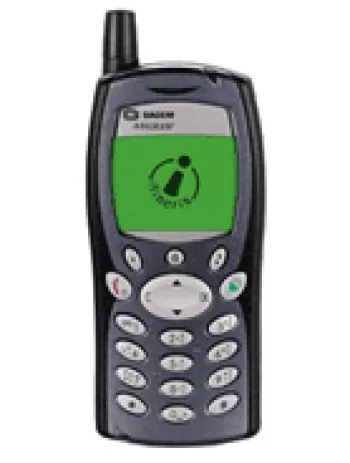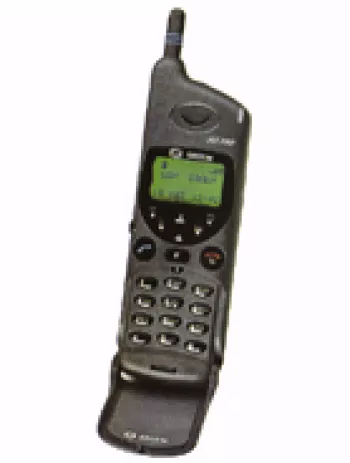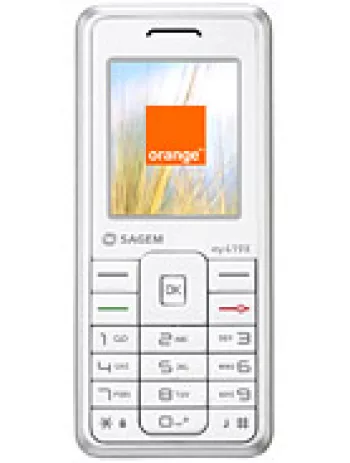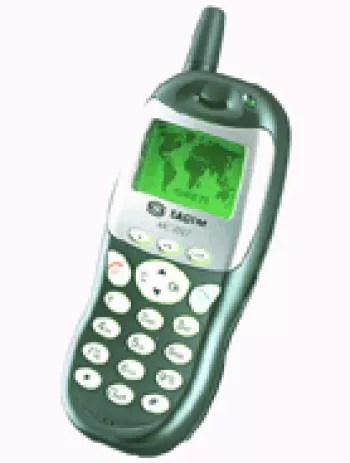
Overview of the Sagem my730c
The Sagem my730c was a feature phone released in Q4 of 2008. It was announced in August of the same year and eventually discontinued. As a device of its time, it reflects the transition period in mobile phone technology when manufacturers were exploring advancements beyond basic functionality but hadn't fully embraced the smartphone era.
Design and Build
The Sagem my730c features a compact and lightweight design, with dimensions measuring 96 x 49 x 16 mm and a weight of around 95 grams. These specifications render it a pocket-friendly device, easy to carry and handle. The phone supports a Mini-SIM card, suitable for its era.
Display
The device is equipped with a 2.0-inch TFT display, capable of showing up to 256K colors. The screen resolution is 240 x 320 pixels, with a pixel density of approximately 200 ppi. Despite the small screen-to-body ratio of about 26.3%, it delivers adequate display quality for basic phone functions like texting and calling.
Performance and Storage
Internally, the Sagem my730c offers 54MB of storage. While this might seem limited by today's standards, it was fairly typical for feature phones of its time. The phonebook can hold up to 1000 contacts and supports photocalls. For additional storage, the device includes a dedicated microSD card slot, allowing users to expand storage capacity as necessary.
Camera
The main camera is a single 2 MP unit, offering basic photography capabilities. It includes video recording functionalities as well. However, it lacks a front-facing camera, which was not uncommon during its release period, as selfies were not yet a popular trend.
Battery Life
Powered by a removable Li-Ion 920 mAh battery, the phone is capable of providing up to 300 hours of standby time and up to 4 hours of talk time. This battery performance was adequate for a feature phone, contributing to its efficiency for daily use without frequent recharging.
Connectivity
As a device supporting GSM/UMTS technology, the Sagem my730c operates on GSM 900/1800/1900 and UMTS 2100 frequency bands. Its data connectivity was limited to speeds of up to 384 kbps. Connectivity options include Bluetooth and USB (miniUSB). However, it does not include WLAN, GPS, or Radio, which could be potential drawbacks for users seeking extensive connectivity features.
Sound
For sound, the phone includes a loudspeaker but does not have a 3.5mm jack, a feature many phones now consider standard. This means there is no direct support for traditional wired headphones unless adapters are utilized.
Other Features
The Sagem my730c includes a set of modest features that enhance its functionality. It supports SMS and MMS messaging, a WAP 2.0/xHTML browser, and includes built-in games and Java MIDP 2.0 compatibility, which was a standard for running basic applications. The absence of advanced sensors and positioning technology reflects its focus as a basic communication device.
Conclusion
The Sagem my730c represents an era of mobile design focused on efficient communication with moderate multimedia capabilities. Its design, while basic, offers portability and durability. The limited camera and connectivity options highlight its primary role as a phone rather than a smart device. Despite being discontinued, it serves as a representation of the mobile technology stage preceding the wide adoption of smartphones.
Main Features of Sagem my730c
- Supports both GSM and UMTS technologies for wider network compatibility.
- Compact and lightweight design with dimensions of 96 x 49 x 16 mm and weight of just 95 g.
- 2.0-inch TFT display capable of displaying 256K colors for vibrant visuals.
- Expandable storage through a dedicated microSD card slot.
- Includes a 2 MP rear camera with video recording capability.
- Bluetooth connectivity for wireless data transfer.
- Convenient miniUSB port for charging and data connection.
- User-friendly interface with support for SMS and MMS messaging.
- Java support (MIDP 2.0) which allows downloading of additional apps and games.
- Removable 920 mAh Li-Ion battery, providing up to 300 hours of standby time and 4 hours of talk time.
Disadvantages of Sagem my730c
- No support for 4G or higher network technologies, limited to 3G.
- No Wi-Fi connectivity, limiting access to wireless networks.
- No GPS for positioning services.
- Lacks a front-facing (selfie) camera.
- No 3.5mm headphone jack, restricting audio output options.
- No built-in FM radio.
- Limited internal storage of 54MB; relies on microSD for expansion.
- Small display size of 2.0 inches with a low screen-to-body ratio (~26.3%).
- Old miniUSB port, less convenient compared to modern USB standards.
- Discontinued status means potential difficulties in acquiring parts or support.

View Also
More Phones
All Rights Reserved +13916 Phones © Mobilawy 2025

























